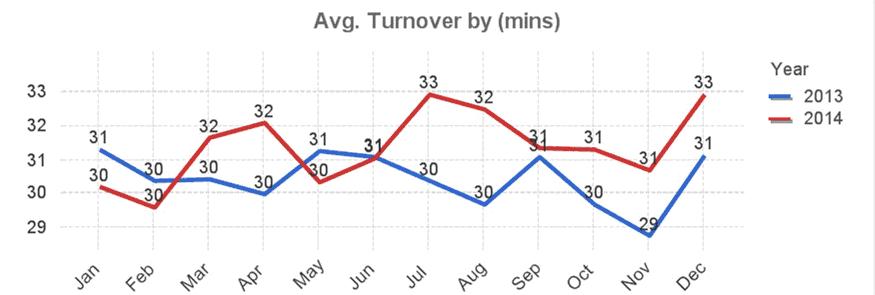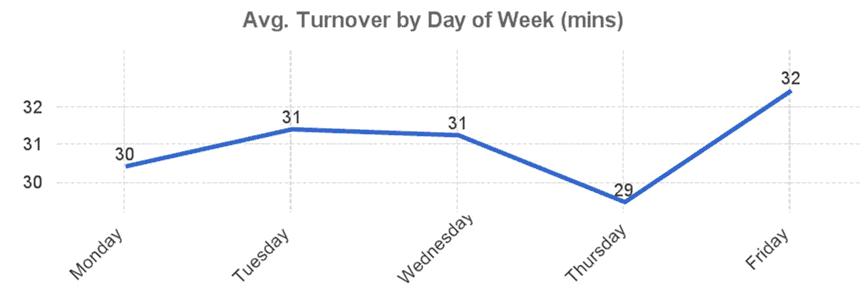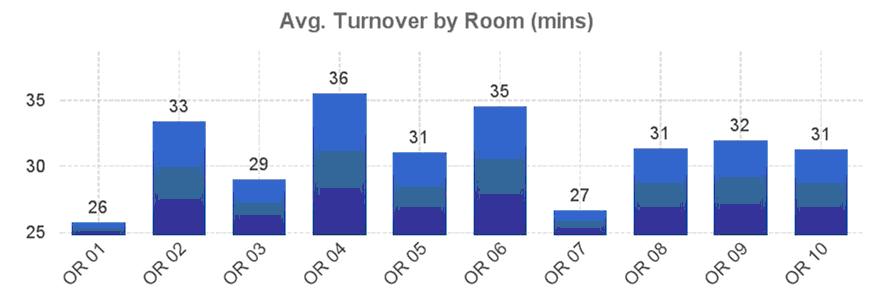In this first in a two-part series, we provide an overview of data analytics and business intelligence, and then discuss ways business intelligence systems can and will be used in ASCs.
Ambulatory surgery centers don't need the same type of data gathering tools as hospitals and large physician practices. This is especially true for small or single-specialty centers. ASCs aiming to track their clinical, operational and cost data want information from systems including:
- Materials management
- Time attendance
- Transactions
- Reporting
When it comes to understanding why an ASC is experiencing certain results, and the steps that can be taken to improve those results, administrators look to information to guide them. With the masses of data captured in today's practice management systems and electronic medical records (EMRs), deciding where to start looking can be paralyzing. For example, if case volumes are down, you may not think to look at a report that shows whether a surgeon is consistently late one day of the week, or look for information that would tell you a new nurse hired for a certain day is causing efficiency issues because she doesn't understand the workflow.
Both data analytics and business intelligence (BI) can deliver the insight ASC administrators need to identify issues and opportunities for improvement, says Amit Jiwani, director of analytics for AmkaiSolutions. However, it's crucial to understand data delivery and visualization options, because there are differences in the type of information they provide to you:
- Data analytics: These systems compile data and report the hard numbers. They provide a lot of raw, detailed data.
- Business intelligence: These systems compile data and use the hard numbers to deliver information about trends and patterns — often in a visual format — that can help identify issues and root causes more quickly and easily.
Here are three charts with data on turnover times, provided by Mr. Jiwani, that begin to illustrate the benefits of data visualization provided by BI:

Figure 1: Graph displays average room turnover minutes trended by month for multiple years. This representation of average turnover minutes displays performance gaps and how this metric is changing over time. However, it does not present a clear action for change to improve turnover.
Figure 2: Graph displays average turnover minutes by day of week for the same time period, as represented in Figure 1 above. This representation provides further insight into the turnover performance, and shows the user where the positive and negative contributions are to this metric. User can determine that Friday, for instance, has diminished performance and can provide a starting point for further investigation.
Figure 3: Graph displays average turnover minutes by operating room for cases occurring on Fridays during the same time period in Figure 1 above. The user is able to drill-down by specific day of the week (e.g., Friday) and identify specific areas in their OR suite where performance improvement can be realized. Ability to analyze such data through a BI solution provide actionable insights for the user.
"Access to good raw data can be great, but it only means so much if you don't have the right answer to a question," says Mr. Jiwani. "It's easier to tease out and identify an opportunity for improvement with BI because it does a lot of the work for you."
Productivity and profitability: managing your workforce
Turnover times and block utilization can make or break an ASC's financial results. Examining room turnover time and block utilization using BI can provide a better understanding of where there might be available space and time for a new surgeon. One way to fill those voids is to focus on adding cases to an ASC's existing specialties. Then, it's important to make sure your staff can manage the additional caseload before implementing the changes.
"Today, ASC leaders aren't spending much time focusing on workforce management analysis," says Mr. Jiwani. "We see a lot of that in the acute care setting as well. There may be a deep focus on working through cases quickly and generating high case volumes, but you don't really know whether we're performing in the most effective way possible. Understanding these metrics may not require change, but having visibility into productivity and utilization can help you identify opportunities that deliver a significant financial impact."
Tracking clinical outcomes for financial health
Clinically, ASCs already track the "bread-and-butter" quality metrics mandated by CMS, accreditation organizations such as the AAAHC and The Joint Commission, and other regulatory bodies. These benchmarks often include:
- Fall prevention
- Burn prevention
- Infection rates
- Clinical outcomes
As the healthcare system moves closer to value-based reimbursement, good outcomes will become a key driver of receiving accurate reimbursements, and EMRs can provide highly granular data about clinical effectiveness and efficiency. Today's EMRs can notify you when precautionary or patient safety measures aren't taken and prompt you to remember to administer antibiotics on time.
"Basic clinical outcomes reports can be generated by any system, and standardized and developed in-house," says Mr. Jiwani. "Where those systems fall short is a lack of near real-time data that tells you what's happening today — when you can actually make an impact on the results."
BI systems go beyond complying with the mandates, and also make sure there are appropriate process and behavior changes to meet those requirements. This type of data collection and analysis is also useful for quality improvement projects necessary for maintaining accreditation.
Information and insight: value vs. cost
Access to easily digestible information can deliver significant value to administrators who are ready to jump on the improvement bandwagon. While there are upfront costs for a BI system, ASC leadership needs to ask whether BI is a nice to have or a necessity for the future.
"Ten years ago, BI wasn't a thought on the provider's mind. Five years ago these systems were nice to have. Today, they are becoming a must-have," says Mr. Jiwani. "Larger ASCs have realized that they need to look at their business this way to run their organization better and make smarter decisions that generate growth. With robust competition in the market, small groups and individual ASCs are making the paradigm shift from running a few reports that 'check the box' to using BI to help them figure out what to do with those numbers."
Maintaining financial results — today and tomorrow
Even if your center is doing well, clinically and financially, data can help owners and operators maintain success and prepare for the future. Today's healthcare environment is unstable. Payers are making changes which cut revenue and freeze margins. As a result, there is a deeper focus on cost accounting to achieve good case volume.
"BI tools can go into a granular level — case by case, encounter by encounter," says Mr. Jiwani. "That will be important because there is going to be a push toward better cost accounting and decision support. You can tell how much revenue was generated by the case and how to turn a profit."
Data collection can make a huge difference for the operational and financial success of surgery centers. ASC owners and operators may want to recruit new surgeons. Using BI, they can take a more strategic approach, asking key questions such as:
- Is a partnership with a particular surgeon economically viable?
- Will the surgeon bring "good" cases to the ASC?
- How can I measure and evaluate the ASC's success?
"It's crucial now that ASCs don't have to go to three different vendors to fill in the pieces of their financial puzzle," says Mr. Jiwani. "Partner with service providers if you don't want to run the systems in-house organically. For small or midsized organizations, working with domain experts makes sense because you can just log in to the website and access the content from anywhere."
Looking 10 years down the road, Mr. Jiwani expects the ASC space to become even more competitive, forcing centers to further differentiate themselves.
"They will continue to compete as high-quality, low-cost settings as they do now, but they will also move beyond the 'dollars and cents.' Focus on the workflow and level of service provided for patient experience and satisfaction," says Mr. Jiwani. "Also consider the physician customers as well. As you compete on clinical outcomes, provide surgeons with information, and do the same with payers when renegotiating contracts. With things moving toward a pay-for-performance model, you will see a focus for ASCs to compete on economics, clinical outcomes, patient satisfaction and physician satisfaction."
In the second part of this two-part series, we will discuss the different types of business intelligence vendors, how to choose the right one for your ASC and then ways to maximize the benefits of business intelligence.
